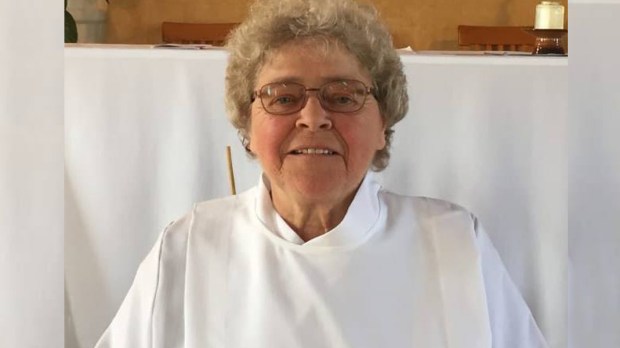The world is buzzing about a recent news story out of Canada. According to America Magazine, Sister Pierette Thiffault of the Sisters of Providence “conducted the wedding of a couple … at a Catholic parish in Lorrainville, Quebec” on July 22.
The sacramental celebration led by Sr. Thiffault was sanctioned both by the Vatican and the local bishop, who explained that “it is an exceptional situation, not something habitual.” Bishop Dorylas Moreau asked for Sr. Thiffault’s assistance as his diocese is experiencing a rather extreme priest shortage with “only 16 priests for 35 parishes in a diocese that covers nearly 9,300 square miles of rugged territory. The diocese has more than 75 nuns, but no deacons, although three are currently in formation.”
While some, including Sr. Thiffault, are calling the celebration an “experiment,” insinuating that through it Pope Francis is changing the role of women in the Catholic Church, the significance of the event is much more modest. If anything, the celebration reminds us of what the Church already teaches about the sacrament of marriage, including who its ministers are.
The Catechism of the Catholic Church explains: “According to Latin tradition, the spouses as ministers of Christ’s grace mutually confer upon each other the sacrament of Matrimony by expressing their consent before the Church” (CCC 1623).
“Before the Church.” That’s the key phrase for understanding the Canadian bishop’s decision. Usually, a priest or deacon acts as the Church’s representative at a wedding liturgy and thereby ensures the ceremony’s “canonical form,” which is a condition for the sacrament’s validity. According to the Catechism, “the priest (or deacon) who assists at the celebration of a marriage receives the consent of the spouses in the name of the Church and gives the blessing of the Church. The presence of the Church’s minister (and also of the witnesses) visibly expresses the fact that marriage is an ecclesial reality” (CCC 1630).
However, the Church recognizes that in rare instances a lay man or woman can fulfill this important role. The Code of Canon Law states: “Where there is a lack of priests and deacons, the diocesan bishop can delegate lay persons to assist at marriages, with the previous favorable vote of the conference of bishops and after he has obtained the permission of the Holy See” (Can. 1112 §1). In these instances, the lay person stands as the Church’s official representative at the liturgy and thus ensures its canonical form.
This provision in Canon Law points to the reality that it is the couple, not the priest or deacon or delegated lay person, who ministers the sacrament of marriage. For most sacraments a cleric is the necessary minister, but for holy matrimony that is not the case.
So while some may think that things are changing within the Catholic Church, the recent wedding in Canada does not mark a new moment. It simply reminds us that the bride and groom minister the sacrament of marriage to each other, and in rare circumstances a lay person may receive their exchange of vows on behalf of the Church.

